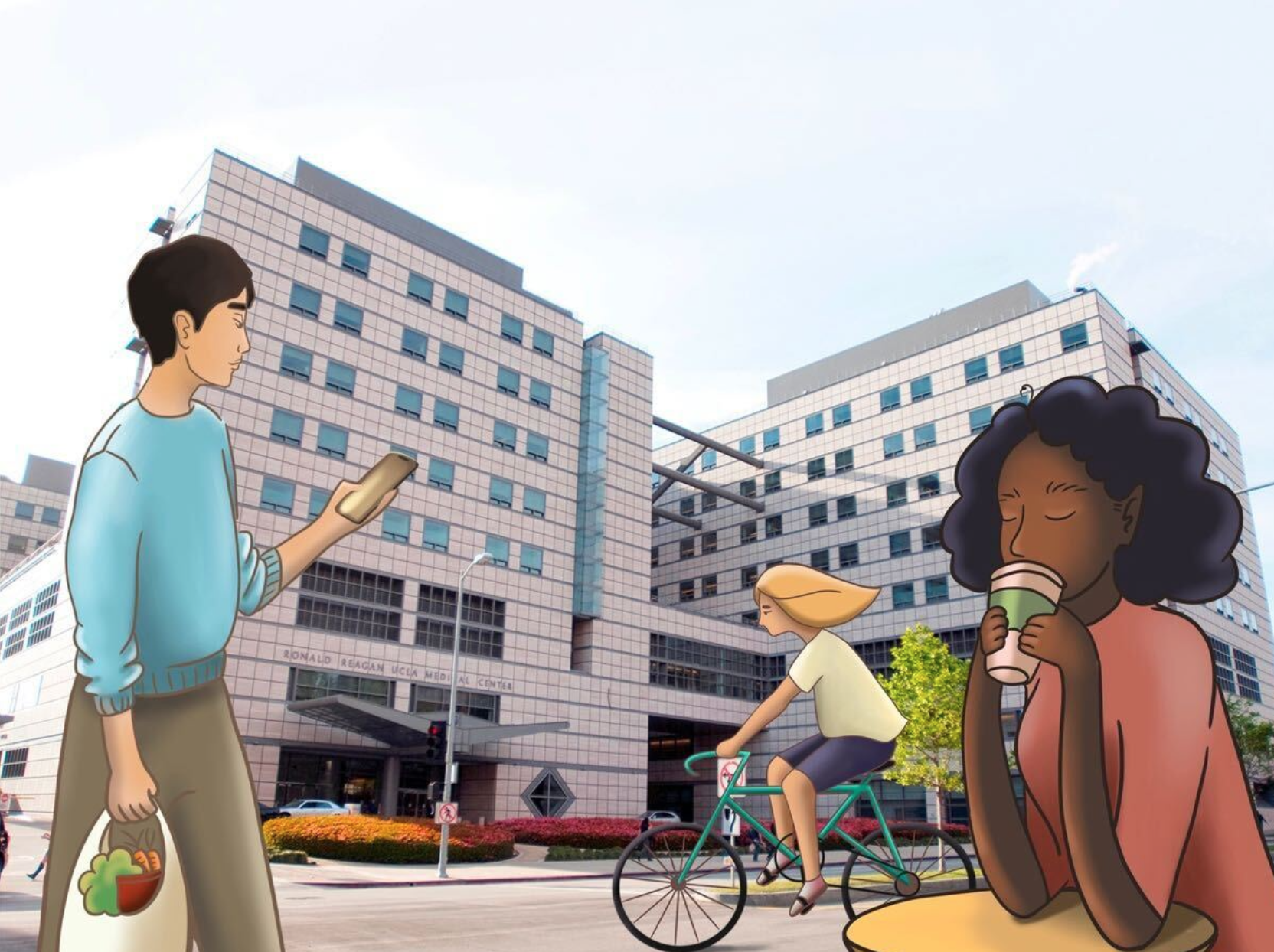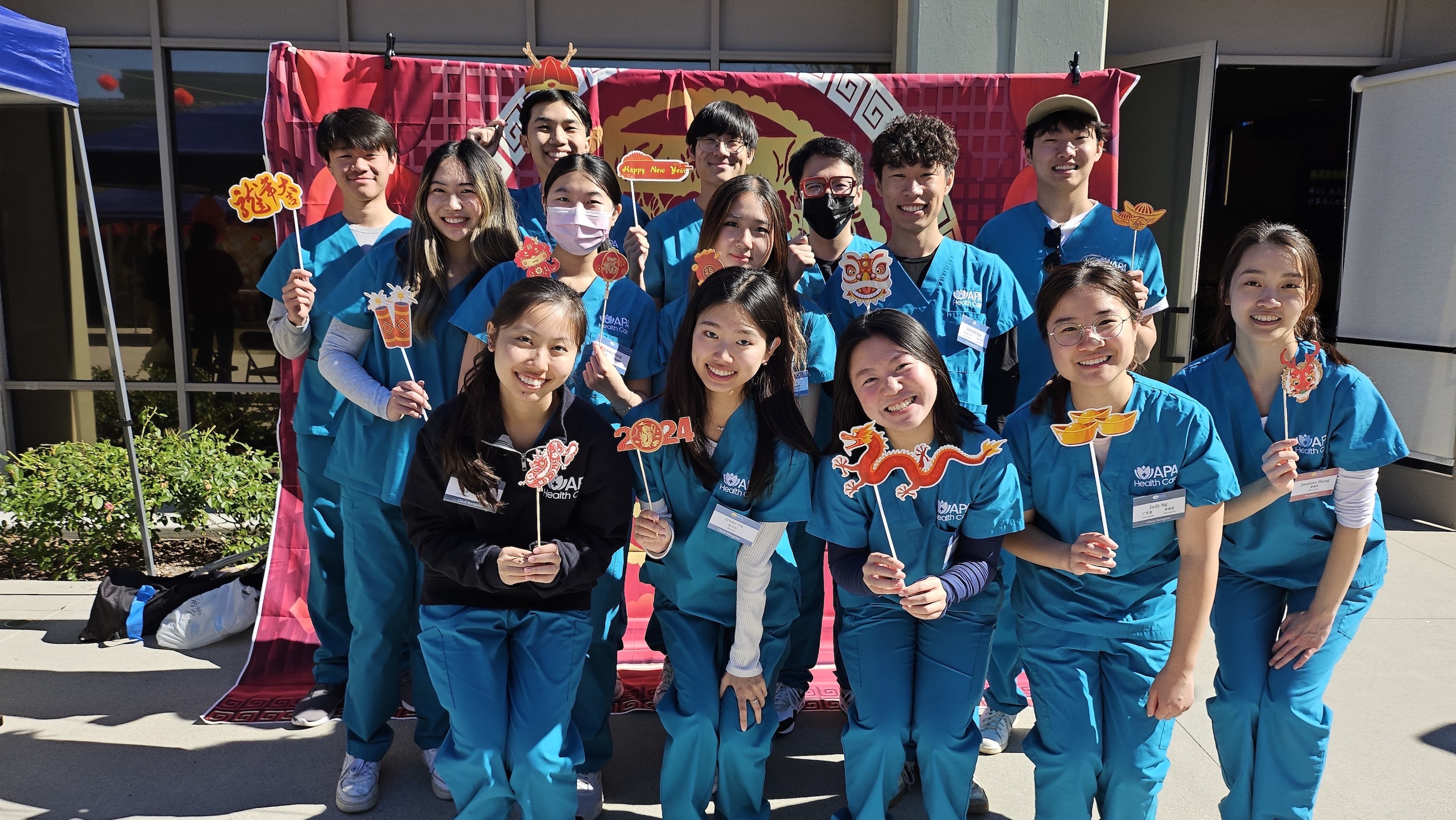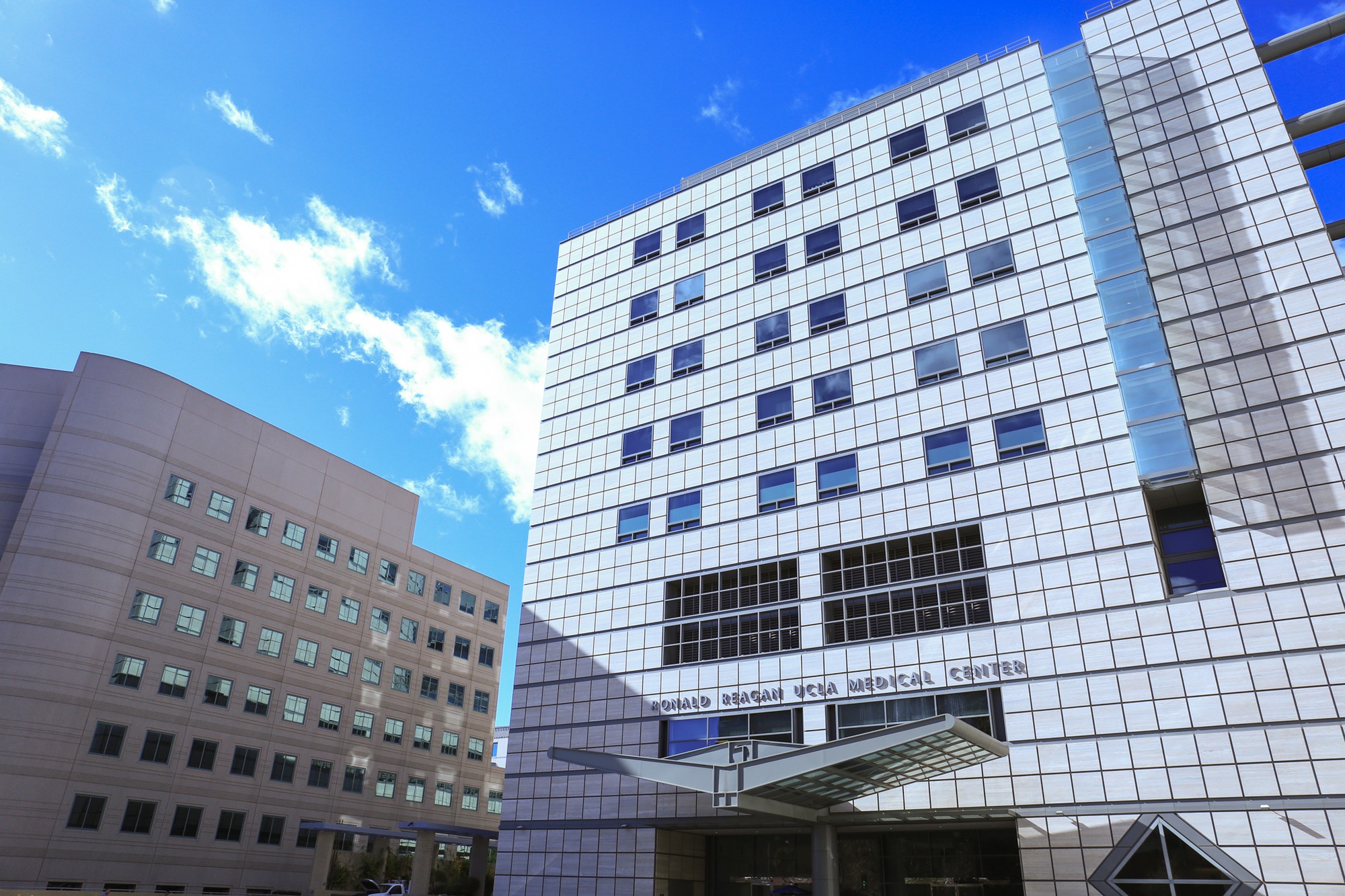Student Stroke Team offers assistance in early stroke detection, patient care
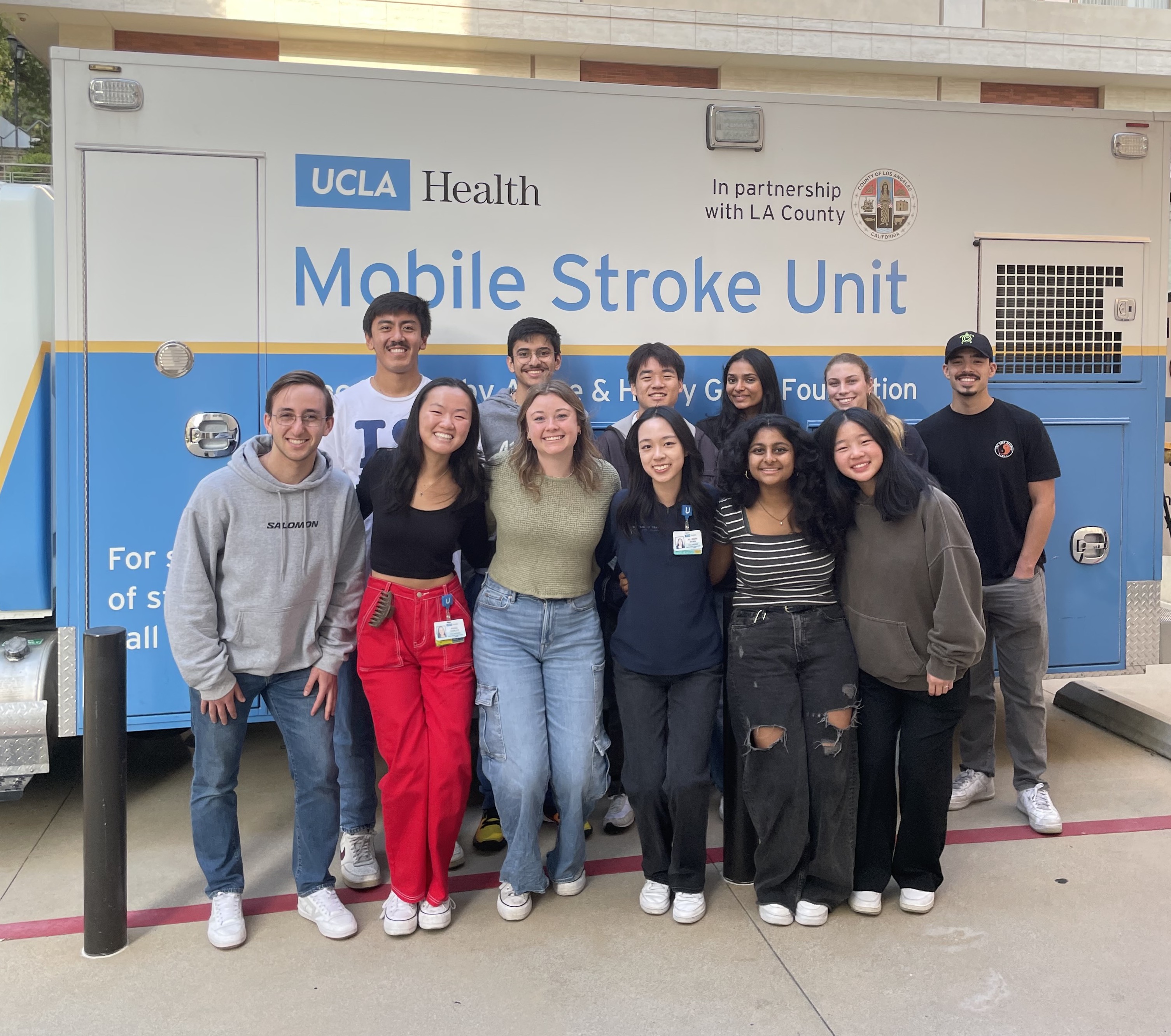
Stroke Team members pose in front of UCLA’s Mobile Stroke Unit – the first one in California. The MSU offers exceptional access to immediate diagnosis and treatment of stroke before reaching the hospital. (Courtesy of Allison Peng)

By Shaun Thomas
Aug. 26, 2024 12:53 p.m.
In the relentless rhythm of the Ronald Reagan Medical Center, Fiona Harley found herself paged four times in a single day to serve as the “eyes and ears” on a stroke case.
The rising fourth-year biology student is one of several members of the Student Stroke Team, an undergraduate organization that helps with early detection and treatment of strokes, according to the UCLA Student Organizations, Leadership and Engagement website. Harley said as part of being a monitor, she witnessed the progression of a stroke patient’s condition in real time, from an initial minor stroke diagnosis to a life-or-death emergency thrombectomy.
Allison Peng, a rising fourth-year neuroscience student and the head coordinator of SST, added that members of the team screen patients to see if any of the stroke patients are eligible for clinical trials they run, in addition to shadowing Stroke Team physicians during their morning rounds.
“When we’re paged to a code stroke, it is really our duty to evaluate patients and really take down all their information in order to see if they can qualify for any of the clinical studies that we’re running,” Harley said.
The Stroke Team’s clinical trials include examining patients with hemorrhagic strokes, ischemic strokes and who need a mechanical thrombectomy – a medical procedure that surgically removes blood clots from the brain, said Nickolas Idrogo-Lam, the SST external affairs coordinator.
“We also help with the workflow of the hospital, doing whatever we can to make it a little bit easier,” Idrogo-Lam, a rising fourth-year bioengineering student, added. “We prepare stroke kits and TPA boxes, which are just used during a code stroke when they need to quickly administer a clot-busting drug, or having the leads and some of the supplies ready for the neurologist and the emergency team.”
Peng said SST tries to make a comfortable environment for the healthcare professionals to streamline their work to give care to patients as fast as possible.
SST members aspire to help create a collaborative environment that fosters learning, said Michael Blekherman, the SST internal affairs coordinator.
“Since we’re really just undergrads, we’re there to learn from the ED and how the medical professionals work in that environment,” Blekherman, a rising fourth-year molecular, cell and developmental biology student, added. “Our goal is to be familiar with the trials and ask them if certain things about the patient would qualify them or disqualify them from the trials.”
Blekherman also said the healthcare professionals are very valuable but are not always familiar with the specifics of the trials – so SST familiarize themselves with the clinical trials so they can assist in any way they can.
Peng said she believes that there is a learning curve for new members who have to understand information related to stroke neurology, including mnemonics and neuroanatomy knowledge.
Many of the SST members stay updated and learn about the trials, novel stroke therapies and basic clinical research through their general meetings, said Kenneth Lin, a rising second-year psychobiology student. He added that members would pair up and create group presentations about those topics to each other to encourage both mentorship and teamwork.
“Getting connected and familiar with all the procedures in Stroke Team but also hosting a lot of events to make us comfortable with other students we would be working within the club,” Lin said. “I was paired with somebody who was a junior during that while I was a freshman. That was very helpful in the sense that I got mentorship from them.”
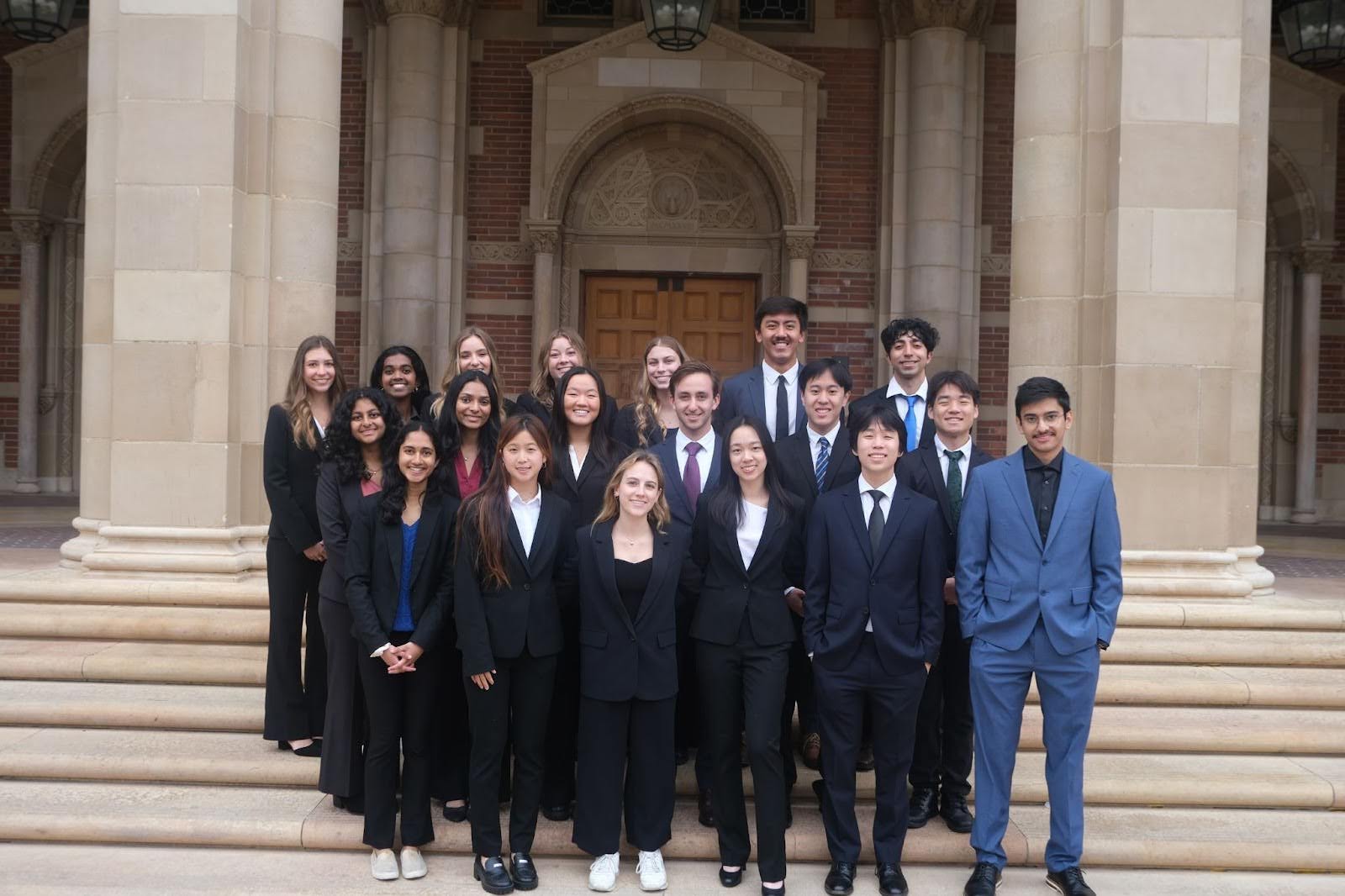
Peng said a lot of the learning also comes from being on shift in the emergency room, as students do not have the experience of being comfortable in that environment. Harley said she found becoming acclimated to the hospital environment challenging, especially given how hard family interactions are.
“With the little experience that we have, it’s hard to really kind of bring comfort to a family,” Harley said. “You have to be very professional while, at the same time, showing an immense amount of empathy.”
Lin said the most challenging part of his role for him is managing the rapidly changing environment of stroke situations, where he must quickly gather and record detailed patient information amid a high-paced setting from the care team.
Idrogo-Lam said he has learned about working procedures and protocols in the hospital for diagnosing patients, in addition to understanding that he must constantly immerse himself within the literature to be a good physician.
Blekherman said his SST experience reaffirmed his desire to become a medical professional in his future, as he wants to be involved with both the research aspect and the collaborative aspect to create treatment plans for patients.
The students also said they believe it is a misconception to say that only neuroscience students or those studying brain-related fields can apply and join the club. In fact, Idrogo-Lam said he and Blekherman, two students in the club’s leadership team, are not majoring in brain-related fields.
“A lot of our general members are not neuroscience majors. What we look for is a genuine interest in research,” said Blekherman.
Peng said Stroke Team has had students from a variety of majors – with some students not even being pre-medical students – and added that some students use their Stroke Team experience to decide whether they want to work in the health care field or not.
Peng said that those applying to SST should reflect on their current experiences and attend an information session to understand why they should join.
Lin said applicants should start on the written application as early as possible so one can showcase their best self. He added that prospective members must also be confident and be very clear in their writing, especially when talking about how they align with the club.
“The symptoms of stroke, they’re very daunting, and they can be very debilitating – for some people, it can be for the rest of their lives,” Blekherman said. “It’s very hard seeing patients come in not being able to talk or walk or not understanding what’s going on with them, but it also makes it that much better when they come out. We see them the next week on the grounds or on our next shift in the hospital recovering and doing much better than when they came in.”


